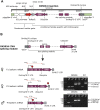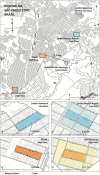New self-sexing Aedes aegypti strain eliminates barriers to scalable and sustainable vector control for governments and communities in dengue-prone environments
- PMID: 36394032
- PMCID: PMC9650594
- DOI: 10.3389/fbioe.2022.975786
New self-sexing Aedes aegypti strain eliminates barriers to scalable and sustainable vector control for governments and communities in dengue-prone environments
Abstract
For more than 60 years, efforts to develop mating-based mosquito control technologies have largely failed to produce solutions that are both effective and scalable, keeping them out of reach of most governments and communities in disease-impacted regions globally. High pest suppression levels in trials have yet to fully translate into broad and effective Aedes aegypti control solutions. Two primary challenges to date-the need for complex sex-sorting to prevent female releases, and cumbersome processes for rearing and releasing male adult mosquitoes-present significant barriers for existing methods. As the host range of Aedes aegypti continues to advance into new geographies due to increasing globalisation and climate change, traditional chemical-based approaches are under mounting pressure from both more stringent regulatory processes and the ongoing development of insecticide resistance. It is no exaggeration to state that new tools, which are equal parts effective and scalable, are needed now more than ever. This paper describes the development and field evaluation of a new self-sexing strain of Aedes aegypti that has been designed to combine targeted vector suppression, operational simplicity, and cost-effectiveness for use in disease-prone regions. This conditional, self-limiting trait uses the sex-determination gene doublesex linked to the tetracycline-off genetic switch to cause complete female lethality in early larval development. With no female progeny survival, sex sorting is no longer required, eliminating the need for large-scale mosquito production facilities or physical sex-separation. In deployment operations, this translates to the ability to generate multiple generations of suppression for each mosquito released, while being entirely self-limiting. To evaluate these potential benefits, a field trial was carried out in densely-populated urban, dengue-prone neighbourhoods in Brazil, wherein the strain was able to suppress wild mosquito populations by up to 96%, demonstrating the utility of this self-sexing approach for biological vector control. In doing so, it has shown that such strains offer the critical components necessary to make these tools highly accessible, and thus they harbour the potential to transition mating-based approaches to effective and sustainable vector control tools that are within reach of governments and at-risk communities who may have only limited resources.
Keywords: Aedes aegypti; genetic sexing; self-limiting insects; sustainability; vector control.
Copyright © 2022 Spinner, Barnes, Puinean, Gray, Dafa’alla, Phillips, Nascimento de Souza, Frazon, Ercit, Collado, Naish, Sulston, Ll. Phillips, Greene, Poletto, Sperry, Warner, Rose, Frandsen, Verza, Gorman and Matzen.
Conflict of interest statement
SAMS, ZHB, AMP, PG, TD, CEP, CNS, TFF, KE, AC, NN, ES, GCP, KKG, MP BDS, SAW, NRR, GKF, NCV, KJG, KJM are current or former employees of Oxitec Ltd.
Figures





Similar articles
-
Silencing the buzz: a new approach to population suppression of mosquitoes by feeding larvae double-stranded RNAs.Parasit Vectors. 2015 Feb 12;8:96. doi: 10.1186/s13071-015-0716-6. Parasit Vectors. 2015. PMID: 25880645 Free PMC article.
-
Molecular tools to create new strains for mosquito sexing and vector control.Parasit Vectors. 2018 Dec 24;11(Suppl 2):645. doi: 10.1186/s13071-018-3209-6. Parasit Vectors. 2018. PMID: 30583736 Free PMC article. Review.
-
Lab-scale characterization and semi-field trials of Wolbachia Strain wAlbB in a Taiwan Wolbachia introgressed Ae. aegypti strain.PLoS Negl Trop Dis. 2022 Jan 11;16(1):e0010084. doi: 10.1371/journal.pntd.0010084. eCollection 2022 Jan. PLoS Negl Trop Dis. 2022. PMID: 35015769 Free PMC article.
-
Genetic sexing strains for the population suppression of the mosquito vector Aedes aegypti.Philos Trans R Soc Lond B Biol Sci. 2021 Feb 15;376(1818):20190808. doi: 10.1098/rstb.2019.0808. Epub 2020 Dec 28. Philos Trans R Soc Lond B Biol Sci. 2021. PMID: 33357054 Free PMC article.
-
Sex determination and Aedes population control.Parasit Vectors. 2018 Dec 24;11(Suppl 2):644. doi: 10.1186/s13071-018-3217-6. Parasit Vectors. 2018. PMID: 30583731 Free PMC article. Review.
Cited by
-
Population suppression with dominant female-lethal alleles is boosted by homing gene drive.BMC Biol. 2024 Sep 11;22(1):201. doi: 10.1186/s12915-024-02004-x. BMC Biol. 2024. PMID: 39256812 Free PMC article.
-
Manipulating the Destiny of Wild Populations Using CRISPR.Annu Rev Genet. 2023 Nov 27;57:361-390. doi: 10.1146/annurev-genet-031623-105059. Epub 2023 Sep 18. Annu Rev Genet. 2023. PMID: 37722684 Free PMC article. Review.
-
Successful insertion and expression of a tetracycline transactivator in Anopheles stephensi associated with increased egg production and decreased hatching rate.Res Sq [Preprint]. 2025 Apr 16:rs.3.rs-6270709. doi: 10.21203/rs.3.rs-6270709/v1. Res Sq. 2025. PMID: 40321780 Free PMC article. Preprint.
-
Exploiting Wolbachia as a Tool for Mosquito-Borne Disease Control: Pursuing Efficacy, Safety, and Sustainability.Pathogens. 2025 Mar 14;14(3):285. doi: 10.3390/pathogens14030285. Pathogens. 2025. PMID: 40137770 Free PMC article. Review.
-
Altering traits and fates of wild populations with Mendelian DNA sequence modifying Allele Sails.Nat Commun. 2024 Aug 13;15(1):6665. doi: 10.1038/s41467-024-50992-9. Nat Commun. 2024. PMID: 39138152 Free PMC article.
References
-
- Alphey L., Nimmo D., O’Connell S., Alphey N. (2007). “Insect population suppression using engineered insects,” in Transgenics and the management of vector-borne diseases. - PubMed
-
- Bond J. G., Osorio A. R., Avila N., Gómez-Simuta Y., Marina C. F., Fernández-Salas I., et al. (2019). Optimization of irradiation dose to Aedes aegypti and Ae. albopictus in a sterile insect technique program. Editor Leisnham P. T. (PLoS ONE; ), 14, e0212520. 10.1371/journal.pone.0212520 - DOI - PMC - PubMed
-
- Bouyer J., Culbert N. J., Dicko A. H., Pacheco M. G., Virginio J., Pedrosa M. C., et al. (2020). Field performance of sterile male mosquitoes released from an uncrewed aerial vehicle. Sci. Robot. 5 (43), eaba6251. American Association for the Advancement of Science. 10.1126/scirobotics.aba6251 - DOI - PubMed
LinkOut - more resources
Full Text Sources
Research Materials

